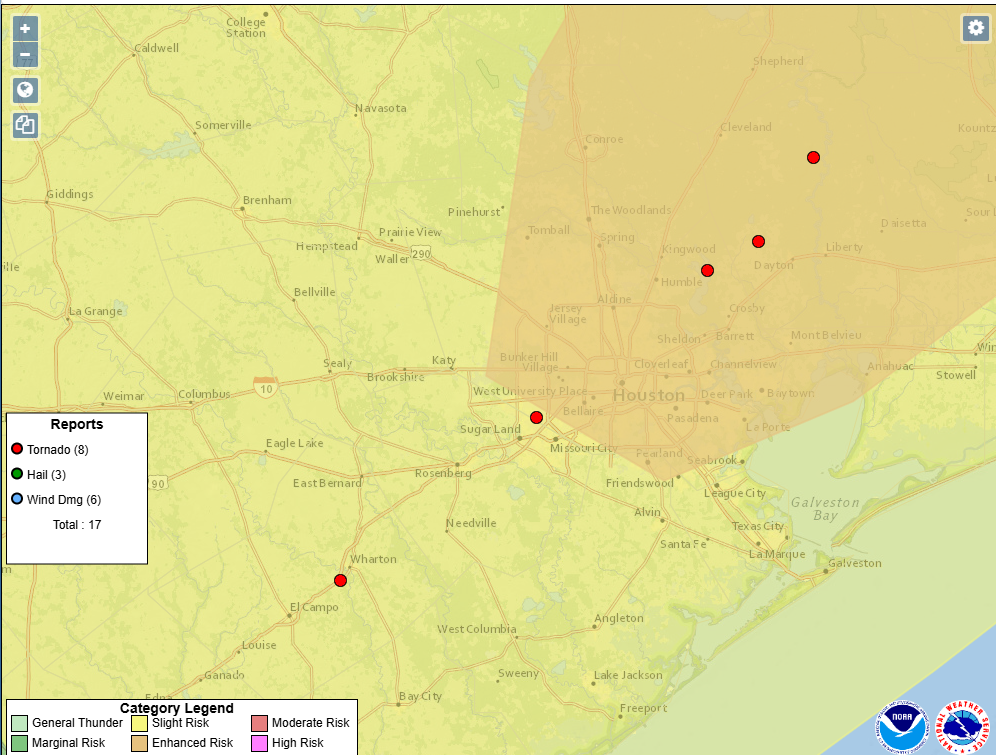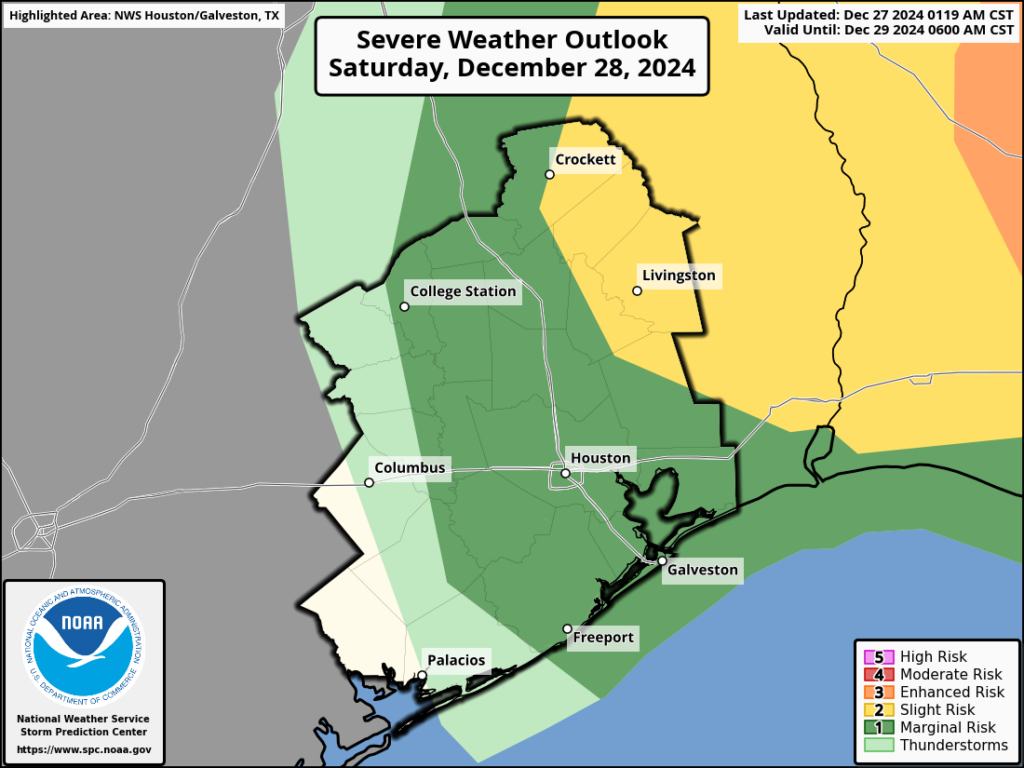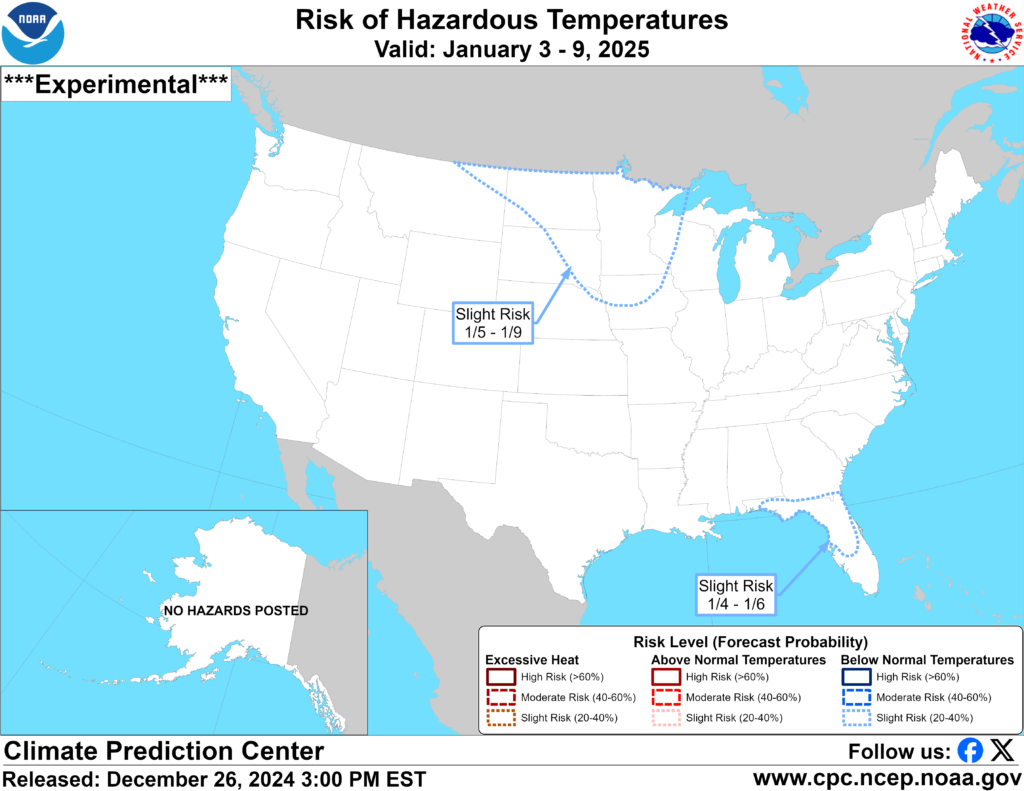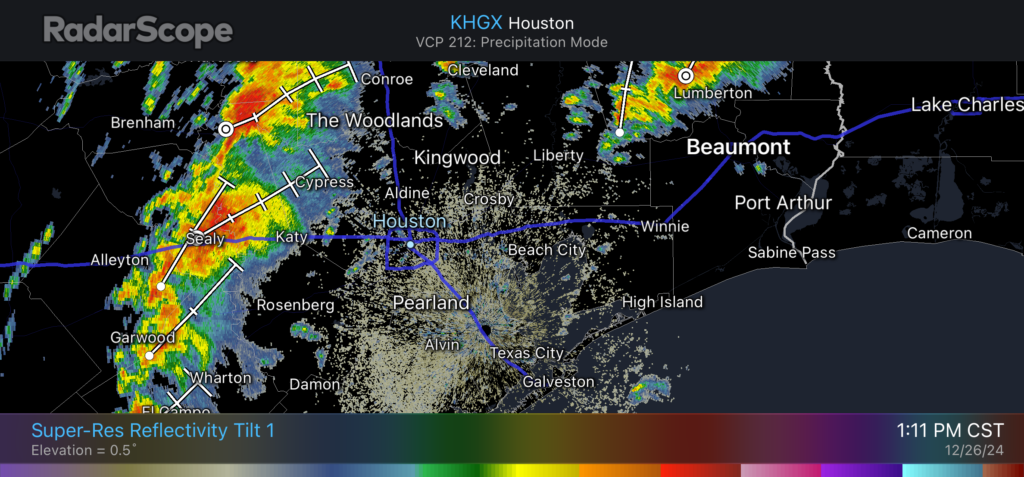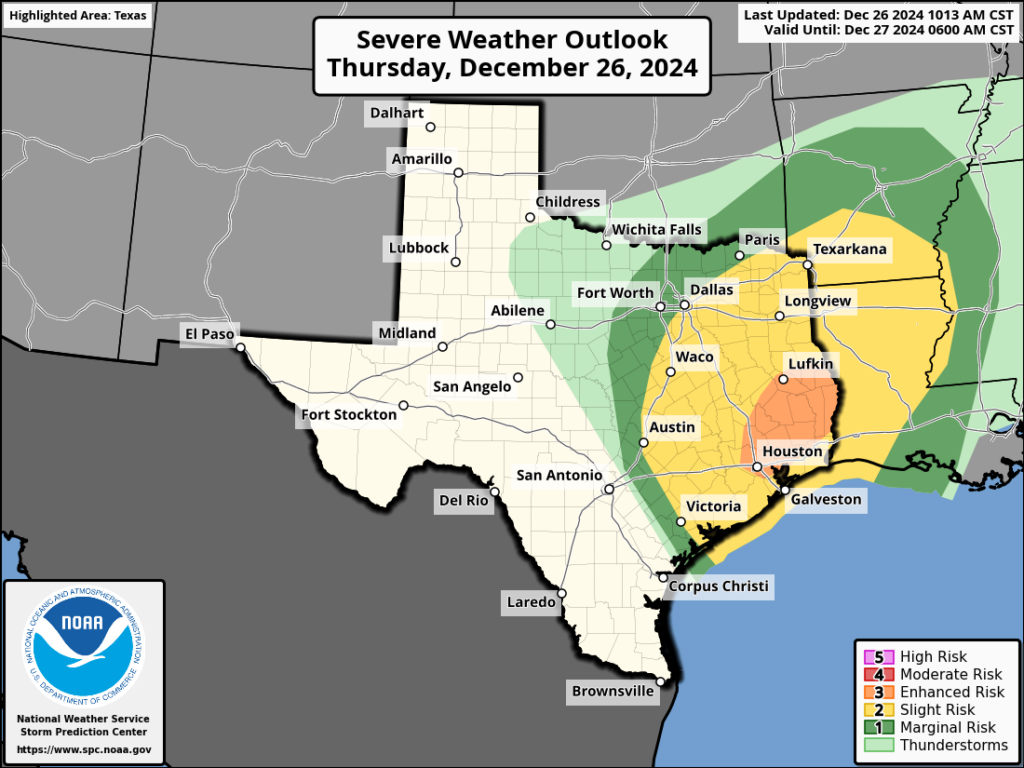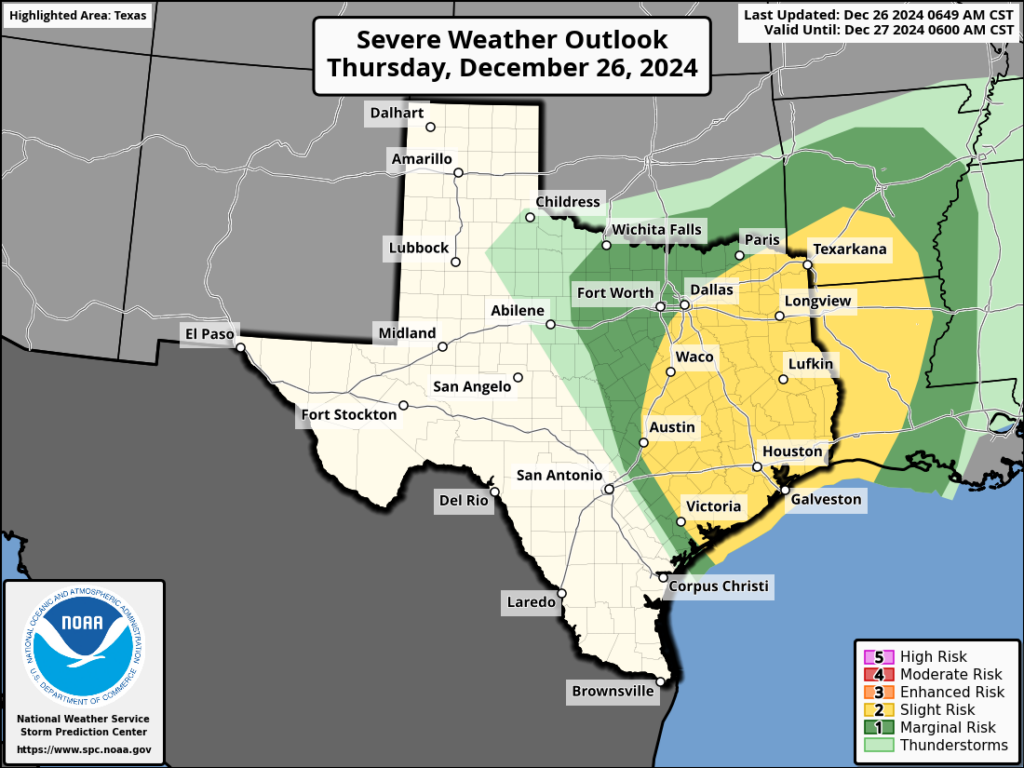In brief: The chances of severe weather today in Houston have increased a bit, although it still appears locations to north and east of the city will be at highest risk overall. Still, there will likely be showers and noisy thunderstorms around. A couple storms, primarily north of I-10 will be capable of producing hail, damaging wind, or an isolated tornado.
We’re on the every-other-day plan here in Houston right now. Storms on Tuesday, a mini-tornado outbreak on Thursday, and now the area will have another chance at thunderstorms and severe weather today. The forecast has indeed gotten a little more challenging here today, which I explain a bit more about below.
The Houston area is under a slight risk (level 2/5) and marginal risk (level 1/5) for severe weather today.
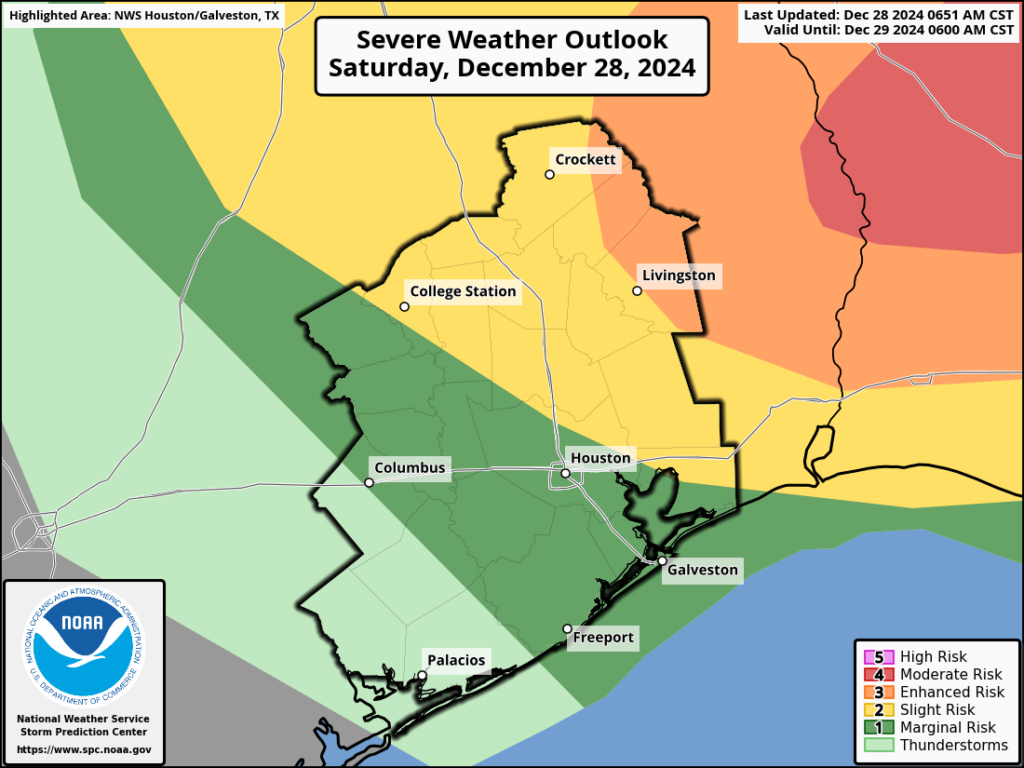
A couple things have happened today to cause these subtle but meaningful changes. We saw minimal showers and storms this morning. Now that the atmosphere is destabilizing a bit, we’ll see more development occur. And, as I speculate on “why” below, modeling generally just didn’t get it quite right based on what they show today. Never verify a forecast on a forecast though, so we’ll see what eventually happens here.
Anyway, a few showers are now beginning to pop up across the area, especially west of Katy and northeast of Baytown. Additionally, a line of thunderstorms is developing back west along I-35 that will become a focal point for general storms and isolated severe weather today.
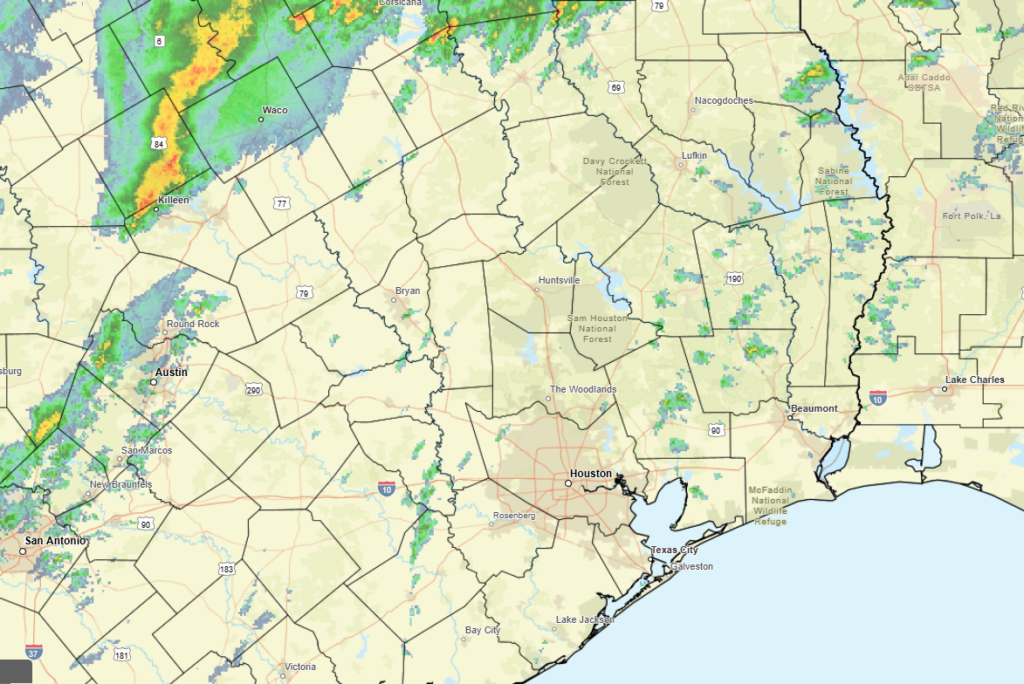
Over the next 3 hours, expect showers to increase in coverage on the west and north sides of the Houston metro. Some of these showers and storms will also increase in intensity with severe risks going up, especially north of I-10 after about 11 AM or Noon.
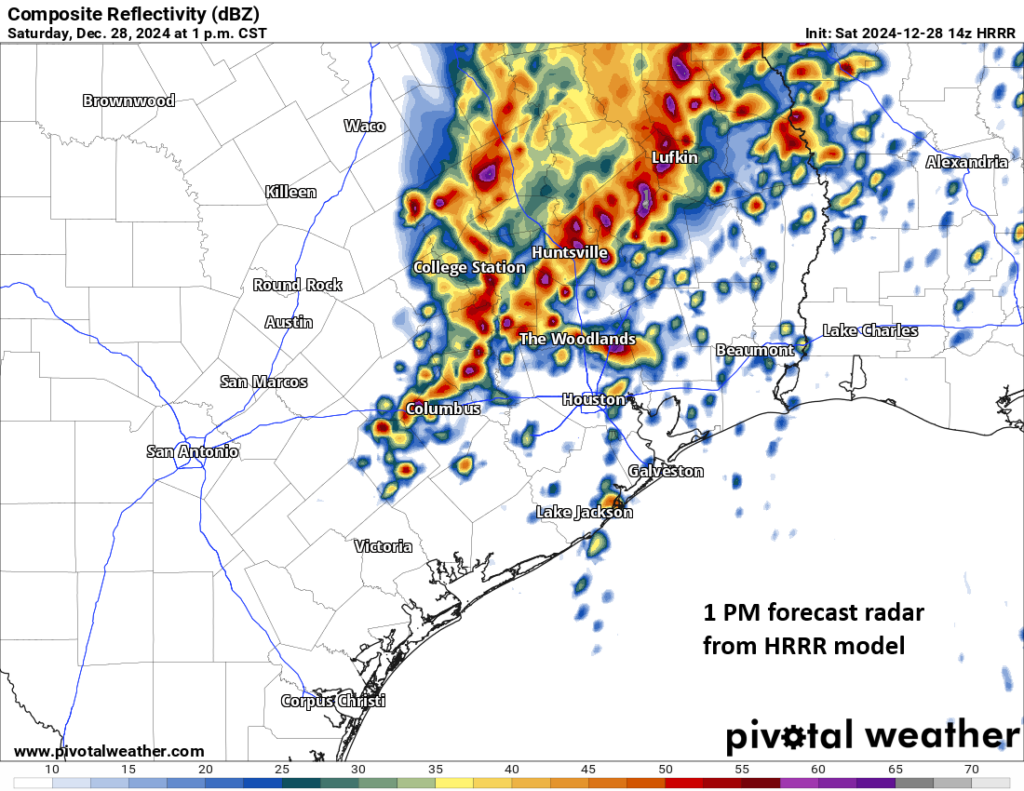
Early to mid-afternoon should see peak coverage and intensity. If the area sees another tornado, it would probably happen in that timeframe, though the odds favor something like that happening north and east of Lake Livingston. But as we saw on Thursday, when odds of severe weather were also highest north and east, the most “photogenic” tornado actually occurred back in El Campo. So, while we are confident that the highest odds of bad weather are to the north and east, our odds here are certainly not zero. Have a way to receive weather alerts today if you’ll be out and about, just so you’re aware of anything changing.
Storms should begin to “line out” and exit the area west to east after 4 PM or so, with quiet weather expected tonight. Tomorrow still looks delightful, with sunshine and comfortable temperatures around 70 degrees.
Playing catch-up?
Worth noting: One commenter pointed out yesterday that it seems like each event has been generally forecast to happen but has tended to worsen as it got closer to happening. Today obviously fits that trend once more. As for why that is? I can’t really pinpoint it with certainty right now. However, I might speculate that an extremely warm western Gulf of Mexico might have something to do with this.
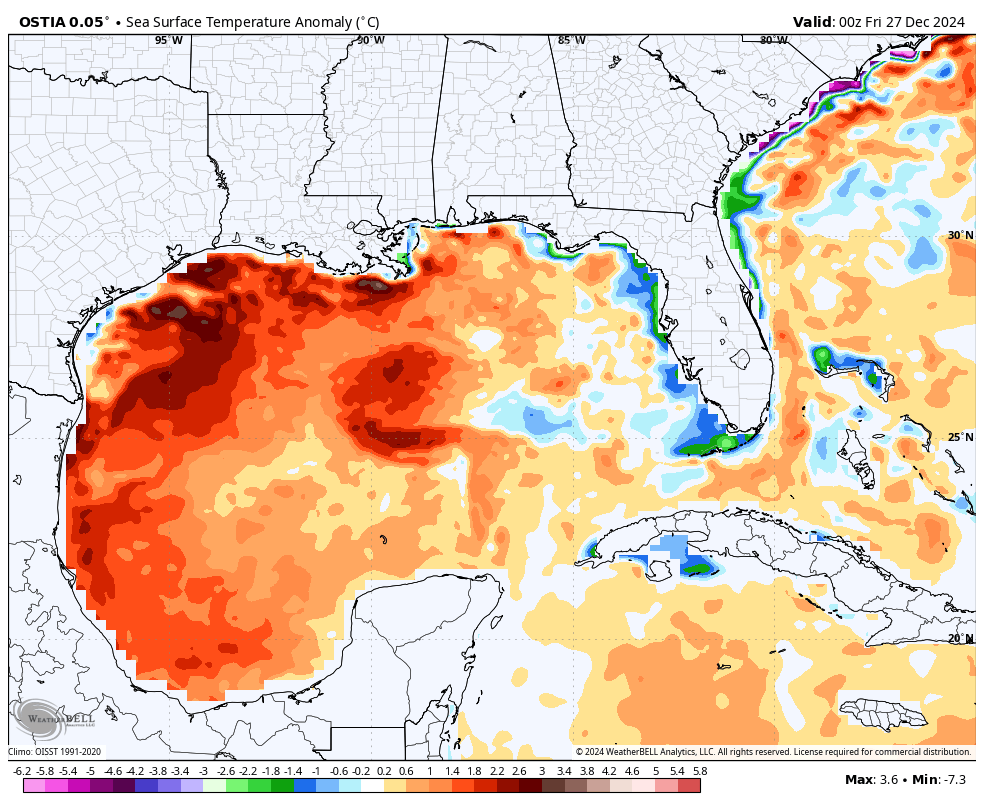
Warm water can help inject more moisture and instability into the atmosphere, and especially so when you’re dealing with temperatures that are as much as 3.5°C warmer than normal. Why would that impact the forecast; shouldn’t this be baked in? The answer is not necessarily. Sometimes models have trouble catching up to anomalies this significant. So it would not be shocking for there to be an element of underforecasting severe risk in this environment by some extent. But I am speculating a bit here. Whatever the case, the pattern mercifully changes after today, and we will see limited to no rain chances until late next week or weekend.

